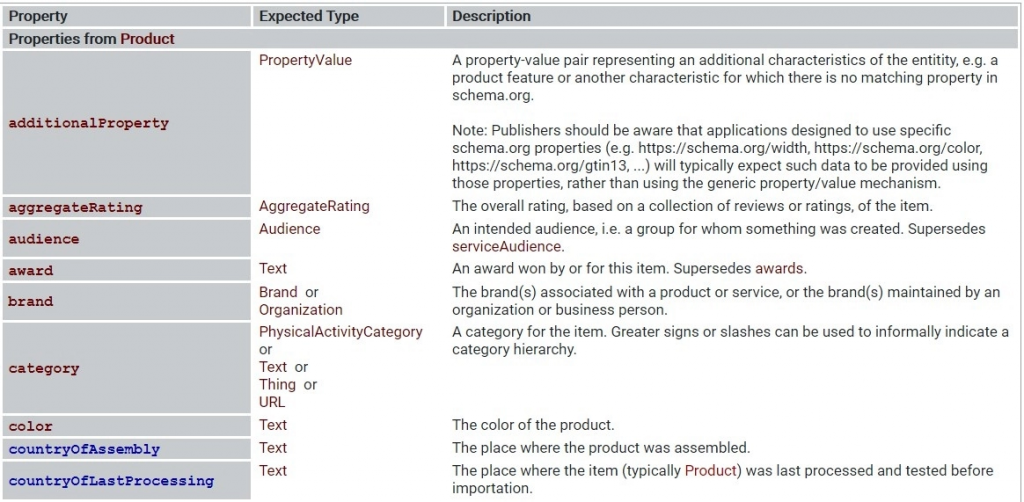Tips to Make the Most Out of Existing Content
Making the most out of existing content isn’t about cutting costs on content production. Instead, doing so addresses many needs. Not only can you work to improve what you’ve already created, but it also helps remove the question of what to do with outdated articles.
Things change over time, and as websites evolve, previous posts may also not accurately reflect your current-day perspective. At the same time, the data you’ve collected can give you a better idea of which areas to improve on for better performance.
How to Update Existing Content
Search Engine Optimization (SEO) evolves frequently and, addressing this is a crucial aspect of content refreshes. Here are some ways to update your existing content to optimize it or skew it for better purposes regardless of what type of website you run.
1. Add or Improve Visual Elements

Interactive visuals supported by Web 2.0 add new dimensions to content. (Source: The UNSDG Project)
Human beings are visual creatures, and strategic use of visual elements can enhance the reading experience. They serve multiple purposes, from breaking the monotony of lengthy text to adding more value to content in the proper context.
What visuals you select for placement can vary depending on your objectives. Infographics, for example, are a good way of increasing engagement since they’re readily shared. The condensation of valuable data onto a single image can be highly impactful.
Other types of visuals can play just as important a role. For example, interactive images facilitated by newer web technologies can add entirely new levels of depth to your content. Readers can click, hover, mouse over, or work with them in various ways to get more information.
Yet visuals don’t always have to be engaging. At times, using simple graphics can serve as better section breakers than you would imagine – as long as you put them into play.
2. Build Greater Depth
One of the reasons for underperforming content is that it may not be sufficiently comprehensive. The depth of content is a contributing factor for page quality rankings, which affects search engine rankings.
In such cases, a simple extension could be the answer to refreshing the content for better positioning. For example, if the existing piece is a “how-to” guide, more depth can be provided by giving examples, suggestions on tools that can help, or simply widening the overall scope.
At the same time, you can improve the structure to reflect the new scope of the article so that it’s interpreted more accurately by web crawlers.
3. Modify Content Presentation
If your content has been sitting around for some time, the chances are that you’re not taking advantage of new content formats and presentations. In ages past, we’ve relied on standard forms of text accompanied by images to present articles.
Today, thanks to faster Internet speeds, more capable devices, and excellent web hosting resources, we can offer much more.
Consider adding new elements that can create whole new dimensions for content presentation—for example, embedding a short video introduction into the article, creating a podcast version of it, or recycling portions of the content into a more comprehensive ebook.
You may also find that new versions of content may be more suitable for specific platforms today. One idea is to share data condensed into charts to more visual platforms like Instagram or Facebook, improving chances of it reaching a wider audience.
Most website owners use content management systems capable of letting readers share comments. Just because we’ve created the content doesn’t necessarily mean we know everything – so take constructive criticism, ideas, or opinions into consideration.
Doing so can allow you to build much greater relevance into existing content and deliver what your audience wants or needs.
In addition to comments, you can further build on this idea by soliciting feedback directly from your visitors. Mail feedback forms to those in your database, create polls and use other tools that can help you gather the necessary information.
5. Refresh Titles and Subheads
A title that may have been relevant when you first created the content can eventually go out of vogue. Making sure to review titles and the appropriate subheads is one way of quickly extending the utility of existing content.
Take, for example, a topic covering “Best Android Smartphones in 2020.” While the year in the title adds much relevance, it can also cause the content to fall out of sync with current needs. In cases like this, a small change can make a significant impact.
Naturally, this should work with an overall review of the content body to ensure that it’s also in line with the updated title and headers.
6. Review Your Links
As the content base of our website grows, there may be new opportunities to focus on internal (and external) links. Link building is an essential part of SEO that helps search engines gauge relevance, authority, and other ranking factors.
When updating your content, link to new authoritative information sources and review internal links to ensure you’re getting the best mileage out of your entire content inventory. Remember also to remove older links that may have become less relevant.
Linking is an essential aspect of your overall content strategy you should regularly review. However, having too many pages can make this a chore. If that’s the case, look for some tools that can help.
WordPress website users have the advantage here, thanks to a large number of plugins available. Link suggestion features can come as a part of tools like Yoast SEO or even independently in a plugin like Internal Links Manager.
7. Consider Breaking Up Some Content
Just because you have comprehensive content doesn’t mean it qualifies to rank with the best links on search results. In some cases, the opposite may be true, such as articles that cover too broad a scope.
If you’re reviewing content and encounter one such piece, consider breaking the topic into separate articles and building greater depth on both. This way, you won’t waste the existing content and optimize two new pieces based on it.
Doing so improves page quality and may also allow you to increase your keyword surface area.
Conversely, doing the opposite may also help – for example, combining two shorter content pieces into something that’s more inclusive and provides better overall content depth.
8. Add Schemas

Caption: There are various schemas, each helping to provide extensive structure to content (Source: Schema.org)
Google’s search ranking algorithm is constantly evolving, putting older content at increased risk of falling behind. For those who have seriously let content updates lapse, the 2019 BERT update saw the introduction of schemas.
Schema markups on content pages give them additional structural elements that help Google identify the content more easily. There are quite literally hundreds of existing schema markups today covering everything from how-tos to product reviews.
Aside from content classification, schema can also help you drive click-through rates by presenting rich snippets more accurately on search results. All you need to do is select the proper schemas for your content pages and work them in.
To give you an idea of what can be structured, examples of existing schemas include:
- Question and answers
- Products
- Creative works
- Reviews and ratings
- Organizations
And more.
9. Include it as Part of Content Marketing Campaigns
Even if you find that some articles may be a bit difficult to revamp, they might find new life if given some space in marketing campaigns. Email marketing campaigns can help you distribute this content effectively, targeted at specific groups of recipients.
Marketing campaigns don’t all have to be about pushing sales and sending your audience the most relevant materials can boost readership on underperforming content. If you do this, remember to package the email campaigns around specific topics for maximum effectiveness.
Why You Should Repurpose Existing Content
There are many reasons why you’d want to look towards maximizing the utility of content that’s already in place. Content production costs time and money. Not making the most of what’s already there is a waste of both past and future resources.
Aside from that, you may find it possible that content that hasn’t performed well in some instances may do a sterling job is simply given a few tweaks. Here are some of the main advantages of getting more out of what you have.
Staying Up to Date With SEO
SEO requirements tend to change fairly often. While some elements, like the need for a fast web host, tend to remain, some aspects will shift without you knowing, especially search algorithms.
These changes can have a devastating impact if you don’t rework existing content to keep up with what readers want. You may find a top three ranked piece free-falling down the search ranks if you don’t keep it updated.
Broadening the Audience Base
Tweaking content for new formats can help in more ways than one. Not only are you potentially updating the ingredients, but possibly looking towards capturing a new audience demographic. For example, converting text to audio gives you access to podcast fans, an area you might otherwise miss completely.
Other audiences prefer highly visual content styles like short videos, interactive images, or the like. You also don’t have to strictly keep content in one format – it can simply be modified and distributed on various platforms to extend your reach.
Boosting the Value of Existing Assets
Most website owners will be familiar with the imbalance phenomena. Even if you put the same effort into the production of hundreds of content pages, it’s likely only a handful will draw the most traffic.
Continuing to build more content can be an expensive endeavor, so why not look toward increasing the value and utility of what’s already there? As you can see from our tips on making the most out of existing content above, there are many ways of doing so.
Choosing What Content to Repurpose
Although there’s a lot of content that can be given a breath of new life it’s important to understand that it won’t work for everything. Before you spend the time and effort on updating, repurposing, converting, or anything else, there are some guidelines to note.
Work With Evergreen Topics
Evergreen topics are timeless, or at least have a potentially long lifespan. For example, until today, topics like “How to Load Test a WordPress Website” remain helpful. Conversely, an article that reviews the 2015 iPad isn’t likely to get very far no matter what updates you make.
Use the “Tried and True”
Regardless of how popular some of your content is, it won’t remain that way forever. The Internet is constantly populated with newer content that may chip away at your readership numbers. By making some tweaks on content that’s been popular you may breathe new life into them.
Shifting Objectives
Sometimes, existing content can be skewed to an entirely new direction. That’s good if your objectives for it have changed. For example, what used to be an article that draws traffic can be effectively turned into a sales lead to help with conversions instead.
Audit Existing Content
For those who haven’t undertaken updates or content refreshes for some time an audit exercise may be necessary. This lengthier process will give you a comprehensive view of your inventory, allowing you to identify the best content for improving upon.
Start by finding content that best matches your current goals. Are you looking to reach a specific audience or sell more of a particular service? The best articles to repurpose are those which provide a gateway to those goals.
Conclusion
Running a website in the most cost-effective way is a constant challenge. Needs and technologies change, so even the best content needs some help now and again. By working with existing content, you’re ensuring that nothing goes to waste.
Even more importantly, it helps you keep your website streamlined, rather than cluttered with hundreds of content pieces that aren’t doing much more than sitting idly by.
If you still aren’t sure of how to get started, the best place is at the beginning. Do a complete assessment of what’s in hand and start sorting them into categories of urgency for updates. Start from those that need factual or statistical work and move on to repurposing and realignment.
Remember, this isn’t a one-off and should be an integrated part of your overall content strategy.
Sell more, understand your customers’ journey for free!
Sales and Marketing teams spend millions of dollars to bring visitors to your website. But do you track your customer’s journey? Do you know who buys and why?
Around 8% of your website traffic will sign up on your lead forms. What happens to the other 92% of your traffic? Can you identify your visiting accounts? Can you engage and retarget your qualified visitors even if they are not identified?


